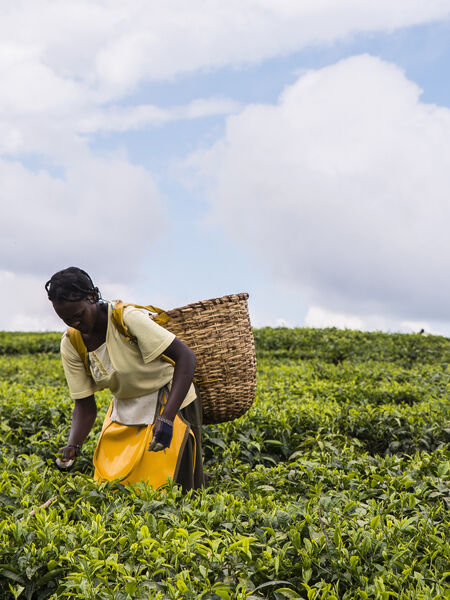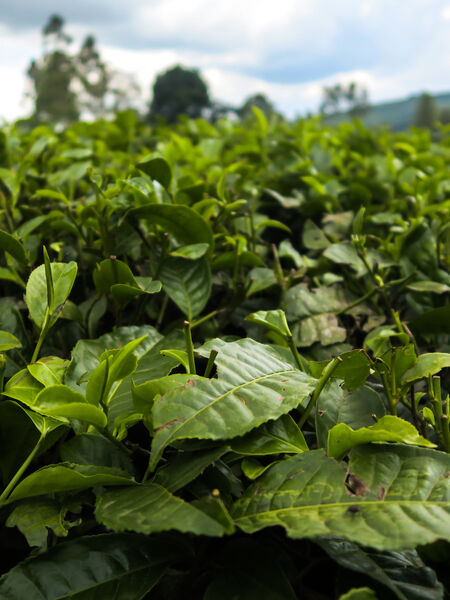From Highlands to Teacups: Kenya’s Finest Teas


KENYA: GOD'S RESTING PLACE
Like its most famous site, the 17,058 ft.-high Mount Kenya, this east African country was most likely named Kenya by the Kikuyu or Kambu tribes two of the more than 40 tribes that populate this stunning coastal country. The meaning of Kenya? “God’s resting place.”
There is no rest, however, for its stellar tea industry, the world’s third largest producer after China and India. (Kenya often volleys with Sri Lanka between third and fourth place.) Even 2020’s pandemic did not slow production which rose 15% over 2019, according to the Kenya National Bureau of Statistics.
KENYA’S TEA INDUSTRY
Kenya’s more than 550,000 small-farm tea growers are the major producers of 60% of Africa’s tea crop. Tea farms covers more than 4,000 square miles with a recent output of 492,000 tons of tea compared to the country’s third stellar agricultural crop, coffee, which is a mere 41,000 tons. In second place are flowers, particularly roses.
Among the many regions and districts across Kenya’s high altitudes and low are Kericho, at the edge of the Mau Forest;, Emrok in the Nandi Hills near the Mogobich River; Rukuriri in the Embu East District, and Milima teas, grown at 6,000 ft. Other regions of note are Bomet, Kiambu, Thika, Maragua, Muranga, Sotik Kisii, Nyamira, Nuambene, Meru, Nyeri, Keriyaga, Embu, Kakmega, Nakuru, and Trans-Nzoia.
These areas produce primarily black tea, in high demand as a blending tea, however modest amounts are also processed as white or green. Africans, in all of its countries drink primarily black teas but Morocco and Senegal drink green tea, flavored with mint.
Kenya is not Africa’s only tea producer of course, as the country now sells upwards of $6 billion worth of CTC (cut-tear-curl) tea worldwide including teas from Tanzania, Uganda, Zambia, and Zimbabwe. Three smaller producers, Burundi, Cameroon, and Rwanda, are modest but credible players. South Africa grows primarily rooibos, a tree-bark source from the Red Bush.
HISTORY OF TEA IN KENYA
Although the Chinese explorer/diplomat, Admiral Zheng He, (1371-1433) led his fleet of 62 ships and nearly 28,000 men on seven expeditions to the “western oceans,” he didn’t do anything in the way of tea trade although he spent a great deal of time in India, Sri Lanka, and even Kenya. Instead, it was the Portuguese and Dutch explorers three centuries later who most likely introduced tea, plus silks and porcelain not just to Europe but to India and Africa.
Tea growing in Africa is fairly recent; the first plantation began in Malawi in 1880 which was pretty much a bust. In 1903, a British man, G.W. I. Caine, planted tea, as an ornamental plant, in Limuru in the Kiambu District. Then, in 1918, Scotsman Arnold Butler gave it a go on a British government farm in Kiambethu, 20 miles from the country’s capital, Nairobi.
Butler’s first attempt farming there was coffee, because he believed the high elevation, some 7,200 ft., would be ideal, but the crop was a dud. Experimenting with some Assam tea cuttings, Butler managed to take advantage of the area’s weather and altitude to eventually grow 20 acres of tea, a modest but continuing success by all accounts.
The influence of Britain on Kenya tea lingers; English and Swahili (Kiswahili) are its official languages. British colonization and rule continued for decades up to as recently as the 1990s when the majority of Kenyans pulled together to become the Republic of Kenya.
Much of this declaration of independence is attributed to the group-centered, tribal concept of harambee, the Bantu word for pulling together as a culture, previously referring to herding and farming in a communal style. Harambee is a remarkable feat considering that the country’s 48 million people comprise 42 ethnic groups, most of whom have different languages or dialects.
Nonetheless, the British and Kenyans still work together, and it’s proven a win-win for both. The UK imports 50% of its tea from this African country’s Rift Valley Province where production relies on its equatorial temperature, high altitudes, and consistently high quality leaf. The first flush is usually January through March and the second is June and July, almost all still done by hand.
NO KENYAN TEA CEREMONY, ALTHOUGH …
One British influence that did not take was afternoon tea, nor any other ceremony for tea drinking. At home, Kenyans drink tea strungi, Swahili for plain black tea or tangawiz, Swahili for black tea with fresh ginger. A third, and quite common way, is strungi with LOTS of sugar, and milk. Tea is chai in Swahili, and incidentally, it has a second, rather provocative, meaning: bribe! We can only imagine how tea was used in the era of clipper ships on “western oceans” and camel travels on the Silk Road to facilitate bricks of tea for trade in silk, spices, porcelain, and other desirables.
Although there is no tiered stack of sandwiches and sweets with Kenyan tea, there are two popular foods eaten with tea either as a snack or for breakfast: a Kenyan version of Indian chapatis made with flour and oil that’s not unlike a light fluffy tortilla, and mandazi, fried donuts sprinkled with confectionary sugar not unlike a beignet, albeit usually shaped in tringles. They’re essentially a fried bread treat, but sweeter.
MANDAZI
(Kenyan Donuts)
INGREDIENTS
- 1 egg, beaten
- ½ cup sugar
- ½ tsp. cardamom*
- ½ cup milk
- 2 T butter or ghee, melted
- 2 cups flour, plus more for dusting your kneading surface
- 2 tsp. baking powder
- 2 T powdered sugar, for dusting the donuts
- Oil for frying, preferably grapeseed or peanut oil
DIRECTIONS
Use a heavy stainless steel or cast iron pot for the frying.
To prepare the batter, mix all the ingredients together in a large bowl. The dough should be soft, but not sticky; if it is, add a little more flour.
Roll the dough on a lightly-floured board until it is about ¼” thick. Cut into 2”x2” wide squares, then cut each at an angle into triangles. (If you prefer, you can cut them into rounds.)
Heat the oil until it is hot and bubbling, then slowly and carefully, places a few into the pan, taking care not to crowd them. Fry the donuts until they’re golden brown on both sides. Using tongs, remove them from the oil, drain on paper towels or kraft paper, and prepare the sugar.
Put powdered sugar in a metal sieve and tap it slightly over each of the hot mandazi. Remove them from the draining paper and onto a platter and serve immediately.
An alternative is to sprinkle 2T of granulated sugar over the donuts.
YIELD: 15 small donuts, approximately
*Cardamom can be substituted with your choice of allspice, ground ginger, or cinnamon.
TANGAWIZI
(Kenyan Ginger Tea)
Fresh ginger is really the best for this recipe but if it is not available, use 2 tsp. of powdered ginger.
INGREDIENTS
- 1 Tbsp of Kenyan black tea
- 2 cups water
- 3 cups milk**
- 1 ½ tsp. freshly grated ginger (peel skin off with a spoon, then grate with a microplane)
- Sugar, to taste (Kenyans love it sweet; 2 tsp. or more per cup is common.)
DIRECTIONS
Prepare this tea using only a saucepan and a strainer.
Pour water into the pan and bring to a boil, then add the tea leaves. Reduce the heat to a simmer, brewing only for one minute.
Add milk and ginger and whisk thoroughly while continuing to simmer, about 5 minutes.
Carefully strain the tea into mugs or cups. Add sugar to taste. Honey works well, too.
**If you prefer plant-based milk, opt for oat milk or coconut milk for the creamiest texture or choose your favorite.
YIELD: Four 8-oz. servings, about.
